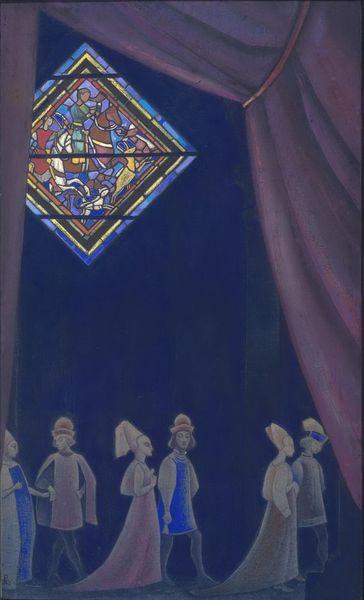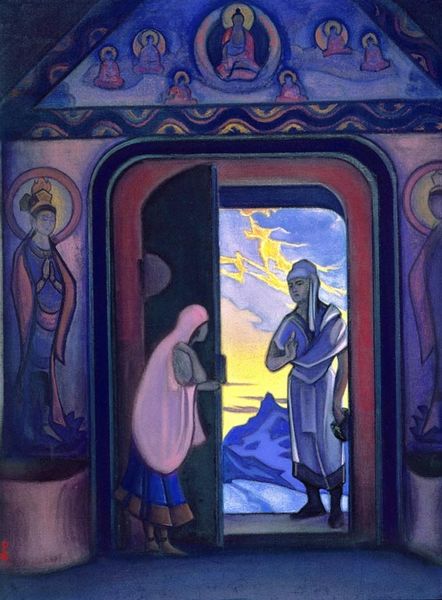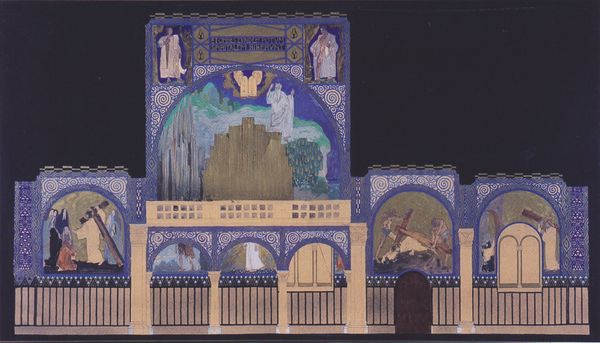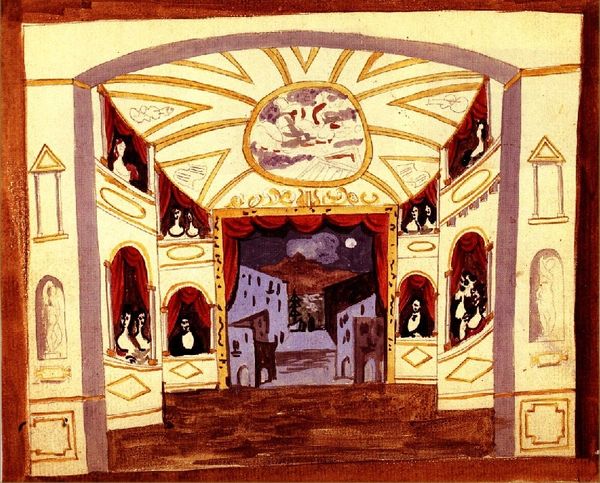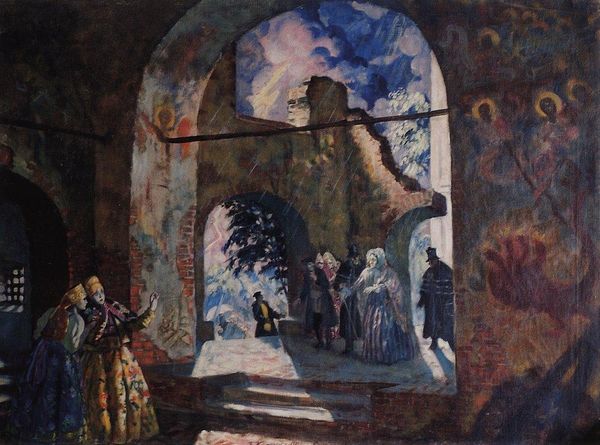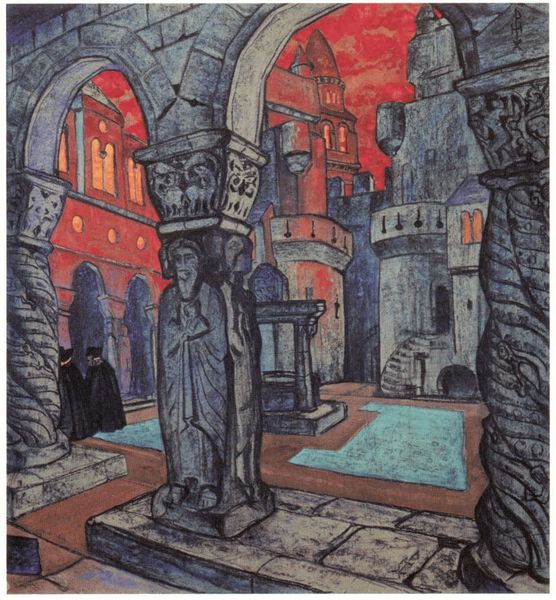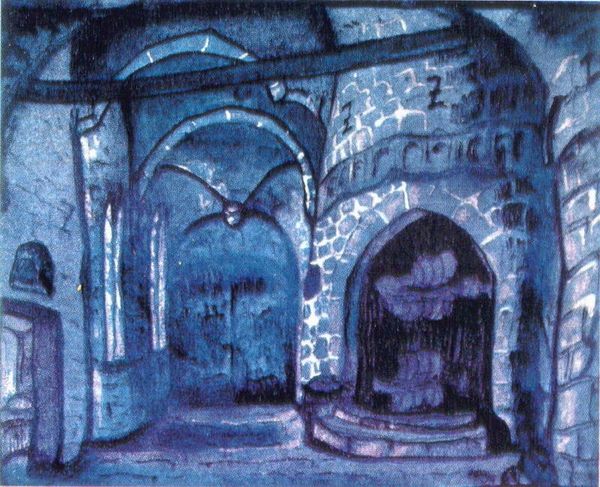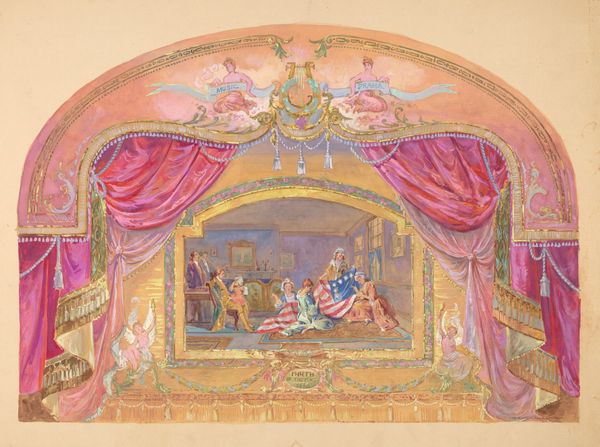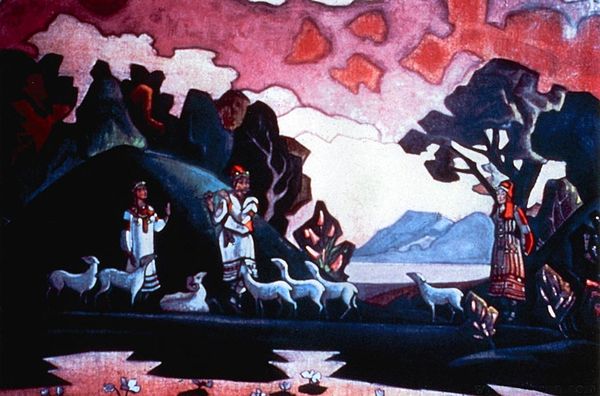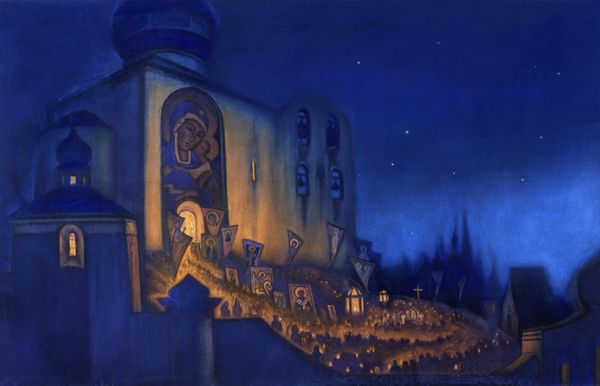
Copyright: Public domain
Nicholas Roerich painted "Glory to the Hero," in an unknown year, using tempera on canvas. The artwork is divided into two distinct visual spaces: an illuminated interior on the left, and a stained glass window on the right, both framed by arches. This contrast invites us to reflect on the interplay between light and shadow, reality and representation. Roerich's approach to form is evident in his simplification of shapes. The sharp angles of the architectural details on the left lead the eye towards the window, which is a complex geometric interplay of coloured shapes. These create an image of a heroic figure, possibly Saint George, slaying a dragon. This juxtaposition highlights Roerich’s interest in symbolic representation and structural clarity. The use of contrasting light, color, and geometric patterns, invites us to decode the semiotic systems at play. By destabilizing fixed meanings, Roerich invites us to contemplate the relationship between material existence and the world of ideas. His composition is not merely aesthetic, but an engagement with cultural and philosophical discourses that continue to evolve with each interpretation.
Comments
No comments
Be the first to comment and join the conversation on the ultimate creative platform.
